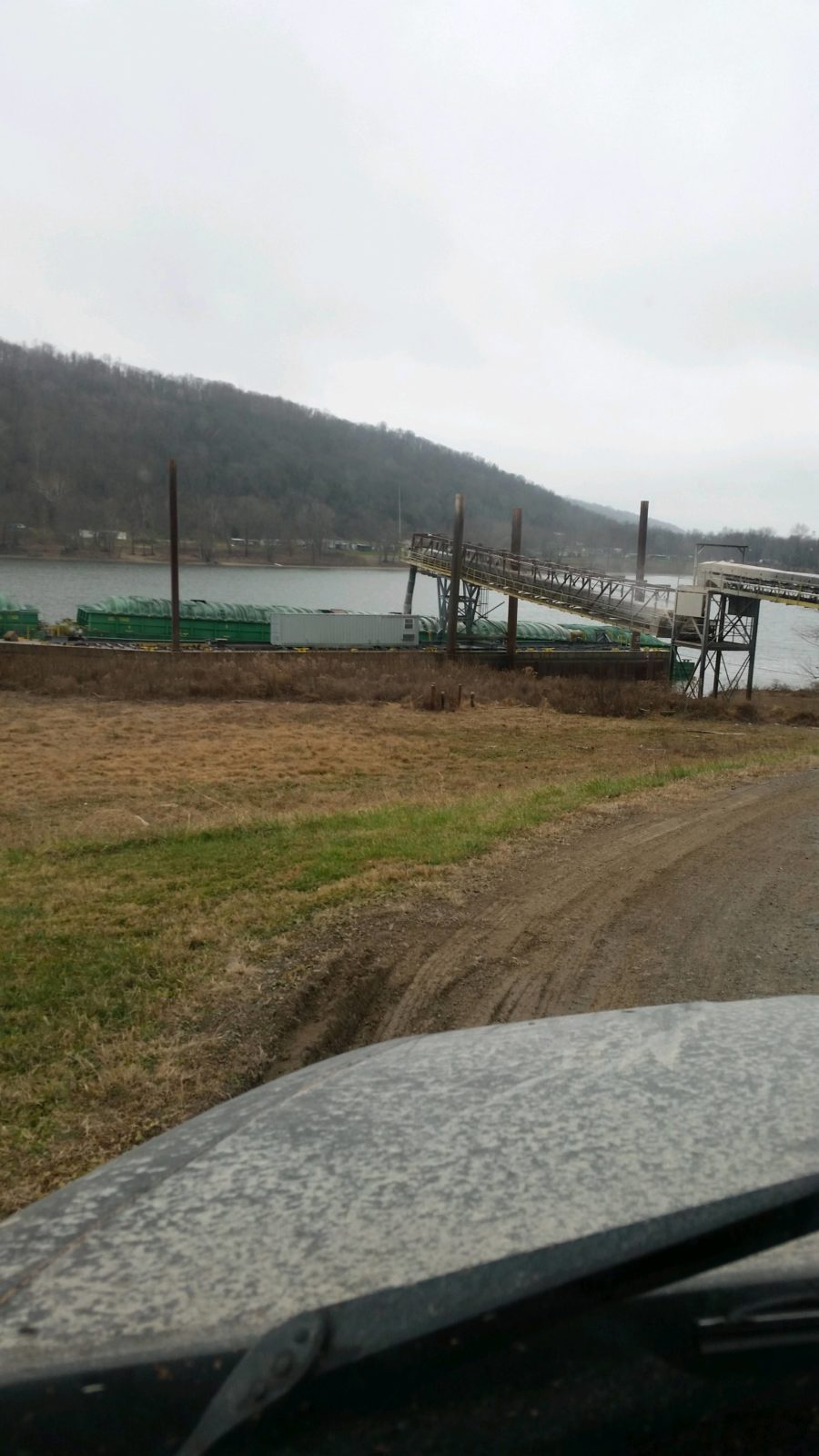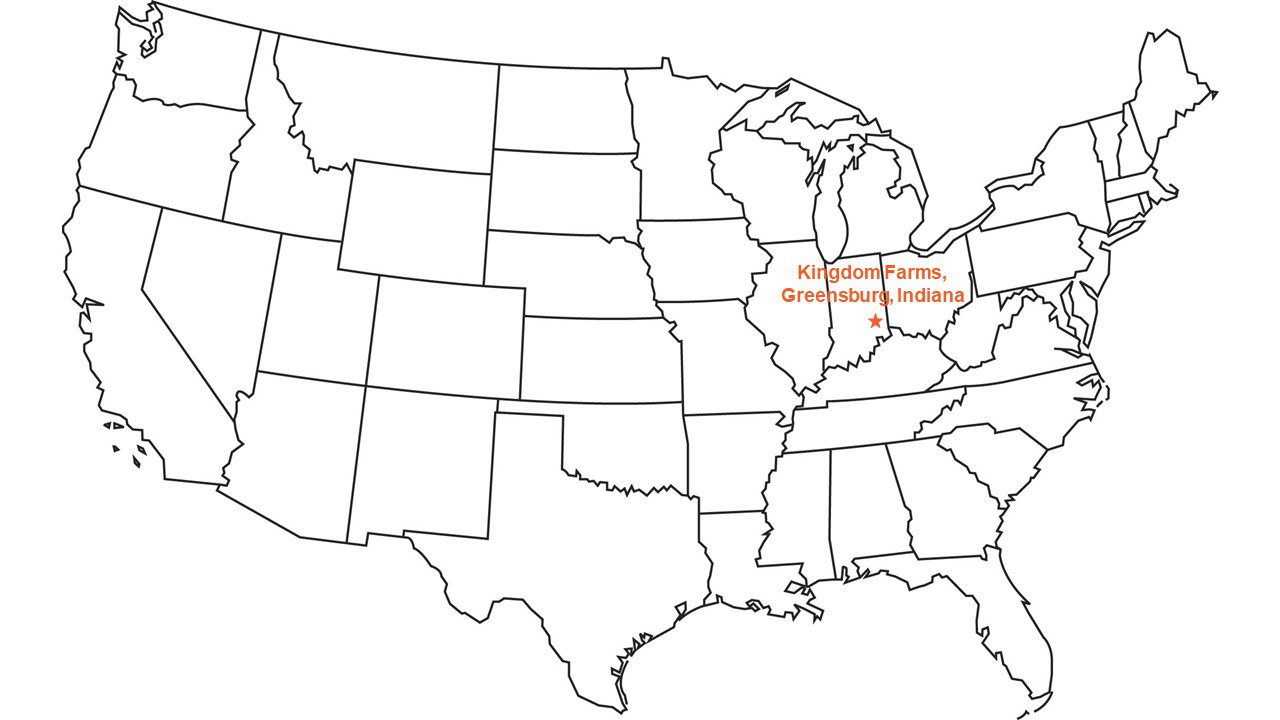Throughout the 2022 growing season, USSOY.org will provide regular Ground Work updates from several U.S. soybean farmers around the country. Follow their updates, #GroundWork2022, to learn about their farms and commitment to producing a reliable, sustainable supply of high-quality soy.
First-generation farmer Mike Koehne grew Kingdom Farms with determination and hard work. Today, he and his family farm about 364 hectares, or 900 acres, of soybeans and corn near Greensburg, Indiana, in the U.S. Midwest. His farm is located 85 km, or 53 miles, southeast of Indianapolis, Indiana, and 108 km, or 67 miles, northwest of Cincinnati, Ohio.
“I worked for area farmers during high school, and I loved it,” Mike says. “My dad was a carpenter, and I went to college to be trained as a diesel mechanic. But when I returned to my hometown after college, I was able to rent some ground from a neighbor.”
Mike rented that first 31.5 hectares, or 78 acres, in 1992, though he had no equipment. He worked full-time for a local trucking company, and he worked for area dairy and pig farmers.
He and his wife Jill were married in 1997. They have four children. Their oldest daughter, Rebecca, manages a grain storage elevator in a town about 65 km, or 40 miles, north. Their 21-year-old son Luke farms and works with Mike full-time. Logan plays American football for a small college in Indianapolis, where he is studying pre-med with plans to become a doctor. And their youngest daughter Caroline is in her sophomore year of high school. They also have a small hobby herd of purebred Angus cattle.
“We grew the farm slowly over time as we acquired more land and equipment,” he adds. “We built everything on our farm – including the house and buildings – ourselves. But we built other businesses for steadier income, as well.”
Starting in 1998, he owned a livestock trucking company for 20 years, transporting cattle, pigs, sheep, goats and more throughout the United States. In 2006, he bought a farm drainage business, which he and Luke continue to run. They install drainage tiles, or plastic tubing, under the surface of fields to help the soils manage water more effectively, supporting soil health and improving water quality.
And he found a niche serving specialty markets.
“As a smaller farmer, raising premium-based crops provides a competitive edge,” he says.
This year, half his soybeans will be high oleic soybeans, grown for their low saturated fat profile. The unique characteristics of high oleic soybean oil include improved shelf life and resistance to oxidation, making it ideal for foodservice and production. Mike delivers these soybeans to a crushing plant in the Indianapolis area, about 75 km, or 45 miles, from his home farm. After processing, the high oleic soybean oil goes to snack food companies.
The other half of his soybeans will be food-grade varieties grown for tofu production in Japan and Taiwan. He trucks these soybeans roughly 190 km, or 90 miles, north to an exporter who processes them for shipment via container.
 Mike also raises identity-preserved, food-grade corn, hard endoplasm corn also called “hard endo” corn, for dry millers in Japan to use for food products. He trucks this corn south about 90 km, or 55 miles, directly to a river terminal on the Ohio River, where it is loaded onto barges to minimize handling. He also grows non-GMO corn for use in the bourbon market in the nearby state of Kentucky. He hauls this corn to a local storage elevator just 11 km, or 7 miles, from his farm.
Mike also raises identity-preserved, food-grade corn, hard endoplasm corn also called “hard endo” corn, for dry millers in Japan to use for food products. He trucks this corn south about 90 km, or 55 miles, directly to a river terminal on the Ohio River, where it is loaded onto barges to minimize handling. He also grows non-GMO corn for use in the bourbon market in the nearby state of Kentucky. He hauls this corn to a local storage elevator just 11 km, or 7 miles, from his farm.
Through his connections within his ag businesses, Mike met other farmers who encouraged him to get involved in industry leadership. He became a director for the Indiana Soybean Alliance in 2016 and enjoyed learning about the industry and from other farmers. He now also represents other farmers as an American Soybean Association board member.
“I have learned so much about what is going on behind the scenes to get U.S. Soy to our customers,” he says. “I’ve also been able to talk to customers in other countries to learn what they want and how they use our products.”
Throughout 2022, Mike will share how he sustainably raises high oleic soybeans and other specialty crops that become high-quality food ingredients through regular updates on USSOY.org.

